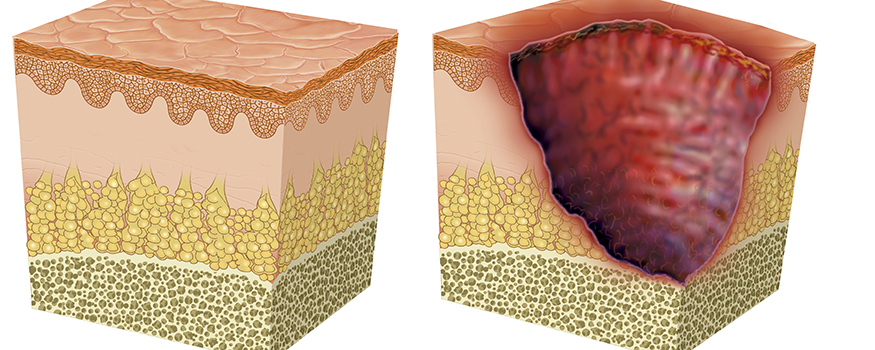Just when we think we’ve figured out pressure ulcer staging, it changes again. In April 2016, the National Pressure Ulcer Advisory Panel (NPUAP) held a consensus conference on staging definitions and terminology. The purpose: to analyze and discuss the rationale for the panel’s changes. One of the key changes is replacing the term “pressure ulcer” with “pressure injury.” So instead of calling it a pressure ulcer staging system, NPUAP will refer to it as a pressure injury staging system. The panel explained that the new terminology “more accurately describes pressure injuries to both intact and ulcerated skin.” Other changes include:
• use of Arabic rather than Roman numerals in the stage names
• modified descriptions of each individual stage (although the underlying definition of each stage remains the same.)
The revised staging guidelines, along with new schematic artwork for each stage, are available for free download.
More than 400 people attended the conference. (I assume most were experienced in wound care.) I wasn’t able to attend, so I reached out to several clinicians who did and found that their reactions were mixed.
Here are some of their responses:”
• “I was surprised the updated pressure injury guidelines were released so soon.”
• “This was presented by industry experts. I preface what I am about to say with this comment because of the concern I had with the updated staging system by end of the meeting.”
• “During a picture review of wounds, incorrect responses were greater than 40%. What became frightfully obvious to me was that if the experts were having trouble identifying the wounds correctly, [it would be even more difficult for nonexperts].”
• “I thought the process would serve to simplify and clarify. I’m not so sure it accomplished either.”
• “Was any thought given to how the changes will affect the conflicts between clinician documentation and the various mandatory reimbursement tools used in different healthcare settings?”
Obviously, comments were all over the board, but I did note a common theme: confusing. Based on attendees’ feedback, I urge wound care clinicians to read the new guidelines carefully and take care in implementing them. And keep in mind what Shakespeare said: “A rose by any other name would smell as sweet.” So pressure ulcers, now called pressure injuries, will still require the skilled care of expert clinicians.
Donna Sardina, RN, MHA, WCC, CWCMS, DWC, OMS
Editor-in-Chief, Wound Care Advisor
Cofounder, Wound Care Education Institute








How will this impact the definition of chronic verses acute wounds? Injury can be considered acute, so will discovery of a pressure injury remain acute until a missed phase in healing or the 30 day window completes?
I did attend the 2016 NPUAP Consensus Conference and thank you for writing about this critical issue. Participants gave consensus only on pre-selected words/sentences. It was not clear to me we would not be allowed to give consensus on entire definitions. It makes no sense we did not have this opportunity. Participants had no input regarding the term “injury” or the development of 2 new pressure categories. In my opinion we did not include significant scientific literature. Also I am distressed because CMS and legal experts should have been consulted prior to announcing any revisions. My concerns were dismissed as I was told the conference was about clinical matters and not legal matters. These revisions seem to be a plaintiff attorney’s dream and are not worth the thousands of dollars and man hours required for implementation. I continue to implore the NPUAP to put these revisions on hold and bring experts together for a true consensus conference.
As a dermatologist and wound care specialist I agree 100% with the new terminology. Why call “ulcer” a discoloration of the skin? Why call ulcer a blister? It is absurd and gives an unprofessional picture with other medical doctors.
Changes in discoloration are macules. A stage 1 pressure injury is a non-blanching red macule, deep tissue injury is a purpuric macule (to me it is merely an eschar that has not dried out but then that is another discussion). A stage 2 pressure related injury is either a blister or an erosion, not an ulcer, and from then on.